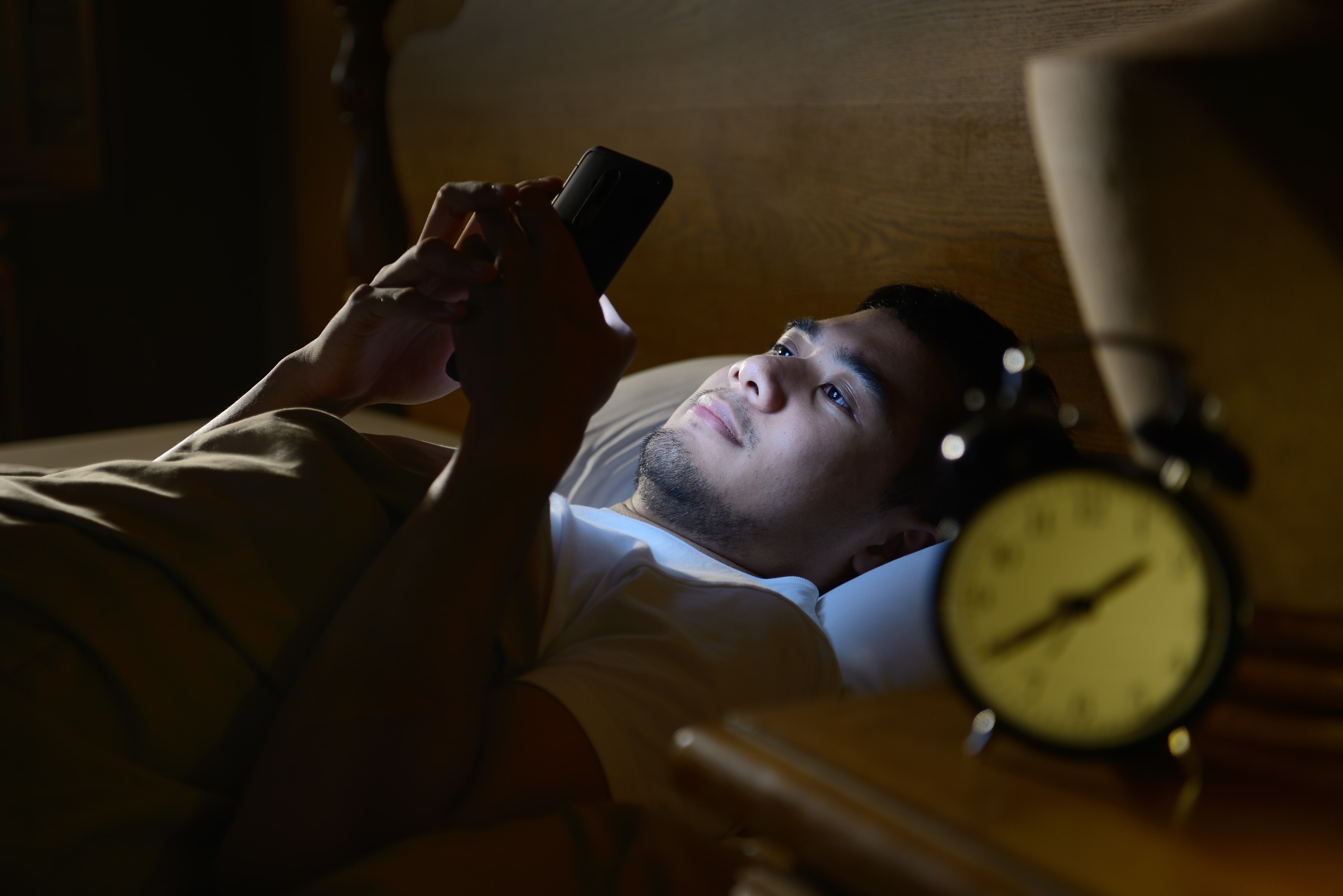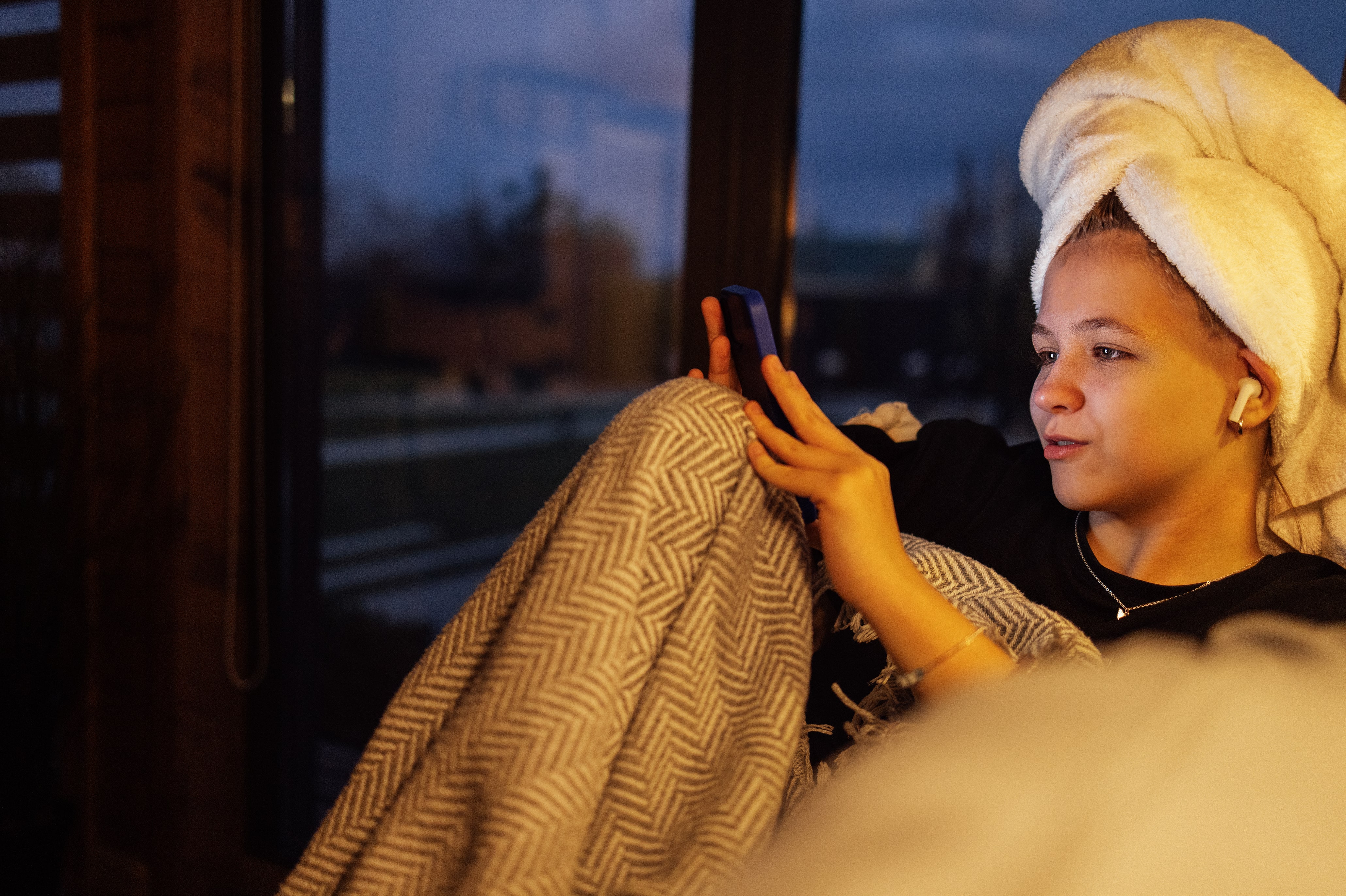Key Takeaways
- Sleep efficiency matters: poor sleep quality reduces insulin sensitivity and increases the risk of glucose intolerance.
- Evening habits, such as early dinners, electronic device-free bedtimes, and low-intensity activities, set the stage for restful sleep.
- Consistency leads to healthy sleep, improved glucose stability, and long-term health.
{{mid-cta}}
As evenings cool and days shorten, a thoughtful bedtime routine can elevate both your sleep quality and your overnight metabolic health. Establishing a consistent sleep schedule supports your circadian rhythm, leading to better sleep and improved well-being and mental health.
Sleep and health experts recommend that adults get 7 to 8 hours of sleep nightly. However, at least one-third of the U.S. adult population sleeps less than 6 hours nightly. Many Americans are deficient in both the quantity and quality of their sleep, measured by a combination of factors including the duration of sleep, the time it takes to fall asleep, the frequency and duration of awakenings, and the level of restfulness upon waking.1
Sleep quality (or sleep efficiency) is often undervalued as a contributing factor to insulin sensitivity. Emerging research highlights the impact of sleep on glucose stability and the increased rates of insulin resistance among individuals with lower-quality sleep.1,2
This article examines how evening habits, such as meal timing, light control, screen use, exercise, and wind-down routines, can enhance sleep efficiency, support overnight insulin sensitivity, and stabilize morning glucose levels.
Why Sleep Efficiency Matters for Insulin Sensitivity

Sleep isn't just restorative; it's a metabolic reset. Improving overnight sleep efficiency enhances insulin sensitivity and glucose regulation.
In fact, short sleep duration, poor sleep quality, and circadian misalignment (night shift work) are now considered lifestyle risk factors for type 2 diabetes comparable to carrying excess weight, poor diet, and low levels of physical activity.1,2
A 2022 review article examined 35 studies where sleep was disrupted (shortened, fragmented, or misaligned) and found that poor sleep quality and frequent disturbances were associated with reduced insulin sensitivity.1
Reduced sleep duration had detrimental effects on the body’s overall ability to respond to insulin; the muscle, fat, and liver became less sensitive to insulin, leading to a buildup of glucose in the blood, as measured by elevated glucose levels.1 Researchers hypothesize that sleep restriction causes stress to the body, resulting in elevated cortisol levels and other hormone levels that promote higher blood glucose levels.1
Another study from 2020 included 399 adults without diabetes and found that those with poor sleep quality had worse metabolic markers even when accounting for sleep apnea and other health conditions that disrupt sleep. Poor sleepers had significantly lower insulin secretion, indicating that their pancreas was not releasing enough insulin, which is an early sign of cell dysfunction, increasing the risk of type 2 diabetes.2
Bottom line: Poor sleep and disrupted sleep patterns not only impair deep sleep and REM sleep stages but are also linked to higher rates of sleep disorders and metabolic dysfunction. Practicing good sleep hygiene promotes restful sleep and overall wellness.
Foundational Components of an Insulin-Supporting Evening Routine

These key elements lay the groundwork for high-quality sleep and metabolic balance. Experiment with these strategies and monitor your sleep and level of restfulness upon waking.
Limit Screen Use (Blue-Light Exposure) Before Bed
Limiting screen time and blue light from electronic devices before bed helps preserve natural melatonin production and promotes a smoother sleep onset. A darker evening routine with reduced light exposure helps regulate your sleep-wake cycle. A large study of 122,058 adults found that daily screen use was associated with a later bedtime and nearly one hour of lost sleep each week.3
Blue-light exposure also disrupts key hormones that promote sleep and glucose stability. In a smaller study, researchers compared reading on a smartphone (with and without a blue-light filter) to reading printed material. Participants who used printed material maintained normal melatonin and cortisol levels, whereas those who used smartphones experienced disruptions in these hormones. Using a blue-light filter lessened, but did not entirely prevent, these adverse effects.4
Sleep in a Dark Room
Creating a calm sleep environment that’s dark, cool, and quiet helps regulate body temperature, support deep sleep, and promote a good night’s sleep.5 Even a dimly lit room has been shown to impact sleep and increase insulin resistance the following morning compared to levels after sleeping in a dark room. One night of sleep in a dimly lit room led to increased nighttime heart rate, decreased heart rate variability, and increased insulin resistance the following morning compared to sleeping in a dark room.5
Dinner Timing
Eating earlier aligns better with your circadian rhythm, supporting optimal melatonin release and improving sleep quality. This is part of good sleep hygiene and ensures you get enough sleep for overnight recovery. Participants who ate dinner at 6 pm compared to those who ate at 9 pm had more stable glucose levels over the next 24 hours and utilized fat stores for energy the following morning.6
Another study of 845 adults in Spain investigated whether eating close to bedtime (within 1 hour) leads to higher blood glucose levels (or impaired glucose tolerance) compared to an early dinner (4 hours before bedtime).7 Melatonin levels were 3.5 times higher in the late dinner group, and glucose levels increased by 8.3%, while insulin levels decreased by 6.7%. Eating dinner close to bedtime matters because melatonin levels are naturally rising, which can interfere with insulin secretion and glucose control.7
Optimal Timed Physical Activity
Physical activity can improve sleep quality, depending on its intensity and timing, particularly when low to moderate-intensity exercise is completed at least 1 to 2 hours before bedtime.
Exercising too close to bedtime and at a higher intensity was associated with longer time to fall asleep, shorter sleep duration, and worse sleep quality among 14,689 adults. Regardless of intensity, exercise ending more than 4 hours before sleep was not associated with any changes in sleep.8 In a small study of healthy young adults, moderate-intensity aerobic and resistance exercise 90 minutes before bed was not associated with any sleep impairment.9
In a study with 60 older adults, low-intensity exercise for 30 minutes between 6 pm and bedtime was a helpful tool for falling asleep faster and experiencing self-reported restful sleep.10
Each person reacts to exercise differently. In some cases, evening physical activity can help you relax and transition into better sleep quality, especially when paired with deep breathing or progressive muscle relaxation as part of your sleep routine. Monitor your response and adjust the timing of exercise if it appears to affect your sleep.
The Signos Approach: Evening Routines Aligned with Real-Time Glucose Insight

Through sleep tips and real-time feedback, Signos can help you build a consistent bedtime routine that supports self-care, wellness, and stable glucose the next day. Maintaining a regular wake time reinforces your internal clock.
Signos Features & Actions:
- Glucose Insight Loop: Track how different sleep routines affect overnight glucose curves and insulin response.
- Post-dinner Movement Prompt: Take a gentle walk or stretch after dinner to improve glucose uptake.
- Dinner Timing Guidance: Encourage finishing meals 2 to 4 hours before bedtime, fine-tuning your timing using Signos data.
- Wind-down Ritual Intelligence: Track the impact of pre-bed activities (reading, dimming lights, stretching) on sleep metrics and subsequent glucose trends.
- Sleep Consistency Reminders: Establish reliable sleep habits that support your circadian rhythm and metabolic balance.
Simple Evening Habits That Optimize Sleep & Insulin Sensitivity

Here are actionable, Signos-friendly steps to elevate both your sleep quality and metabolic long game.
- Try journaling or writing a quick to-do list instead of scrolling social media.
- A warm bath, a cup of chamomile tea, or white noise with earplugs can calm your sleep environment and support relaxation techniques that promote restful sleep.
- Reduce the amount of blue light emitted by your phone by adjusting the settings to “Night Shift” or “Night Light,” which automatically reduces blue light at specific times.
- Use room-darkening curtains or blinds to create a dark sleeping environment.
- Turn off any electronics or lights in your bedroom.
- Consider an earlier dinner, or at least 2 to 4 hours before bedtime.
- Engage in moderate-intensity physical activities at least 2 to 4 hours before bedtime, or opt for low-intensity activities like stretching, yoga, or a short, gentle walk after dinner.
- Avoid caffeine or alcohol in the late afternoon and evening, as these are known to disrupt sleep.
Sample Signos-Style Evening & Overnight Routine

Here’s a fall-ready, Signos-approved evening strategy that boosts sleep efficiency and supports metabolic resilience.
- 6 to 7 pm: Dinner: Lean protein + fiber-rich carbohydrates + vegetables + healthy fat (Roasted chicken, sweet potatoes, Brussels sprouts, onions, garlic drizzled with olive oil and spices).
- 7 to 8 pm: After-dinner 30-minute walk
- 8 to 9 pm: Relaxation, family activities, or household chores (electronic bedtime)
- 9 to 10 pm: Wind-down activities and preparing for bed in a darkened room
Adjust your sleep habits to create a consistent sleep schedule that aligns with your internal clock. Aim for at least 7–8 hours of sleep nightly for healthy sleep and stable glucose by morning.
Remember it’s about consistency, not perfection. Give yourself grace as you adjust your evening routines and support a consistent sleep schedule.
The Bottom Line
Better sleep isn’t just about feeling rested; it's a cornerstone of metabolic health. Prioritizing better sleep has ripple effects across metabolic and heart health, and even reduces risk factors for obesity. By prioritizing evening routines that include an earlier dinner, gentle post-meal movement, a screen-free wind-down, and darkened rooms, you can improve your sleep efficiency and quality, as well as protect your overnight insulin sensitivity.
With Signos’s glucose insights, you can see how these small, consistent habits translate into steadier glucose levels and see real metabolic improvements, one restful night at a time.
Learn More With Signos’ Expert Advice
A CGM not only lets you see how your glucose responds to different types of food and physical activity, but also how evening routines can improve your sleep efficiency, overnight insulin sensitivity, and improve your overall health.
Learn more about glucose levels and tracking on the Signos blog, written by health and nutrition experts.
Topics discussed in this article:
References
- https://pubmed.ncbi.nlm.nih.gov/35189549/
- https://pubmed.ncbi.nlm.nih.gov/32812920/
- https://pubmed.ncbi.nlm.nih.gov/40146105/
- https://pubmed.ncbi.nlm.nih.gov/33499010/
- https://pubmed.ncbi.nlm.nih.gov/35286195/
- https://pubmed.ncbi.nlm.nih.gov/34371933/
- https://pubmed.ncbi.nlm.nih.gov/35015083/
- https://pubmed.ncbi.nlm.nih.gov/40234380/
- https://pubmed.ncbi.nlm.nih.gov/31072217/
- https://pubmed.ncbi.nlm.nih.gov/32431208/




.svg)










.svg)
.svg)
.svg)
.svg)
.svg)
.svg)
.svg)
